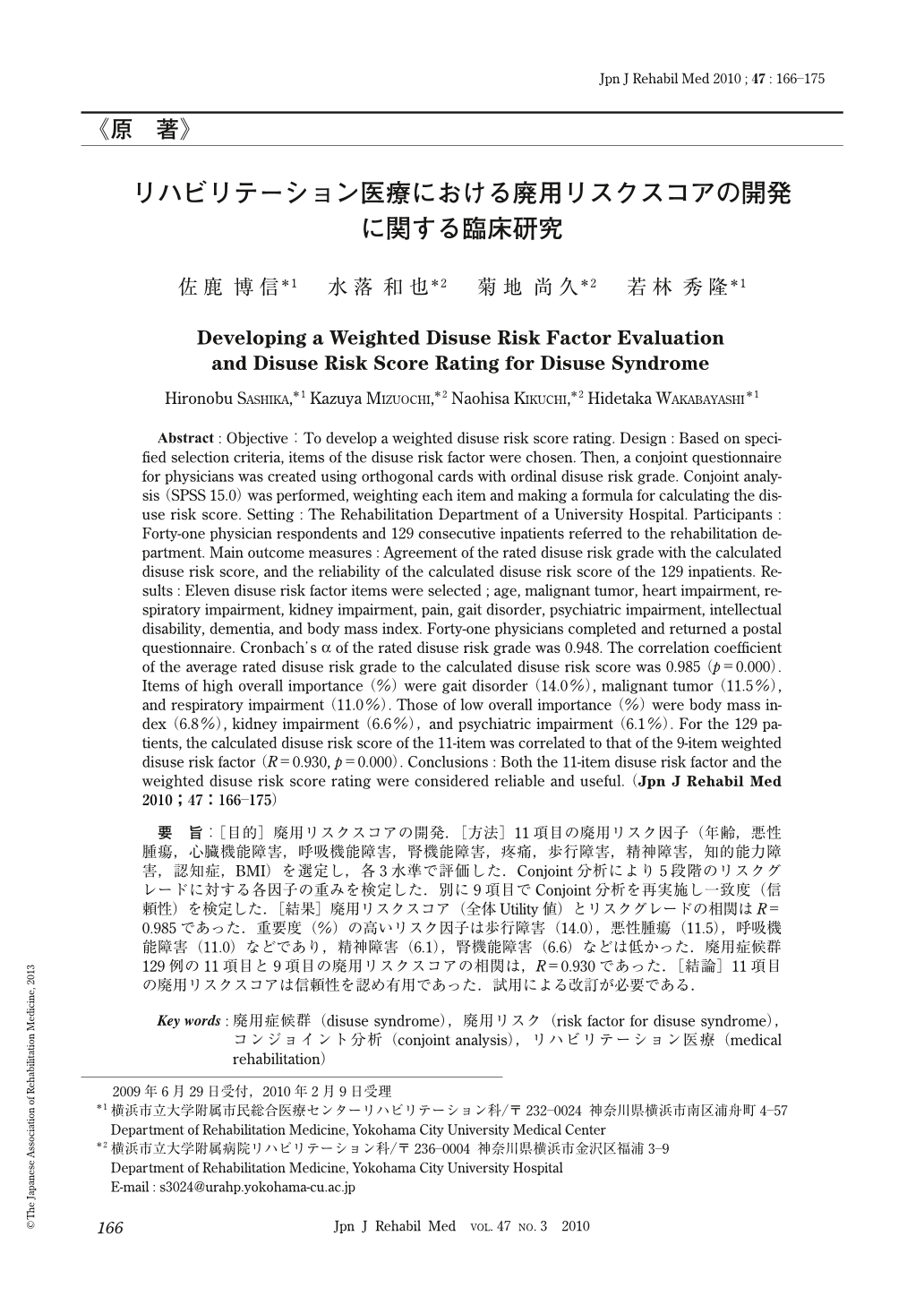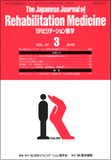Japanese
English
- 販売していません
- Abstract 文献概要
- 1ページ目 Look Inside
- 参考文献 Reference
要旨:[目的]廃用リスクスコアの開発.[方法]11項目の廃用リスク因子(年齢,悪性腫瘍,心臓機能障害,呼吸機能障害,腎機能障害,疼痛,歩行障害,精神障害,知的能力障害,認知症,BMI)を選定し,各3水準で評価した.Conjoint分析により5段階のリスクグレードに対する各因子の重みを検定した.別に9項目でConjoint分析を再実施し一致度(信頼性)を検定した.[結果]廃用リスクスコア(全体Utility値)とリスクグレードの相関はR=0.985であった.重要度(%)の高いリスク因子は歩行障害(14.0),悪性腫瘍(11.5),呼吸機能障害(11.0)などであり,精神障害(6.1),腎機能障害(6.6)などは低かった.廃用症候群129例の11項目と9項目の廃用リスクスコアの相関は,R=0.930であった.[結論]11項目の廃用リスクスコアは信頼性を認め有用であった.試用による改訂が必要である.
Abstract : Objective : To develop a weighted disuse risk score rating. Design : Based on specified selection criteria, items of the disuse risk factor were chosen. Then, a conjoint questionnaire for physicians was created using orthogonal cards with ordinal disuse risk grade. Conjoint analysis (SPSS 15.0) was performed, weighting each item and making a formula for calculating the disuse risk score. Setting : The Rehabilitation Department of a University Hospital. Participants : Forty-one physician respondents and 129 consecutive inpatients referred to the rehabilitation department. Main outcome measures : Agreement of the rated disuse risk grade with the calculated disuse risk score, and the reliability of the calculated disuse risk score of the 129 inpatients. Results : Eleven disuse risk factor items were selected ; age, malignant tumor, heart impairment, respiratory impairment, kidney impairment, pain, gait disorder, psychiatric impairment, intellectual disability, dementia, and body mass index. Forty-one physicians completed and returned a postal questionnaire. Cronbach's α of the rated disuse risk grade was 0.948. The correlation coefficient of the average rated disuse risk grade to the calculated disuse risk score was 0.985 (p=0.000). Items of high overall importance (%) were gait disorder (14.0%), malignant tumor (11.5%), and respiratory impairment (11.0%). Those of low overall importance (%) were body mass index (6.8%), kidney impairment (6.6%), and psychiatric impairment (6.1%). For the 129 patients, the calculated disuse risk score of the 11-item was correlated to that of the 9-item weighted disuse risk factor (R=0.930, p=0.000). Conclusions : Both the 11-item disuse risk factor and the weighted disuse risk score rating were considered reliable and useful.

Copyright © 2010, The Japanese Association of Rehabilitation Medicine. All rights reserved.


